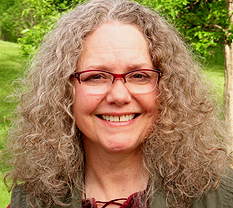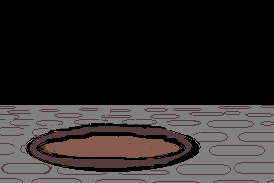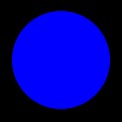
The daunting task of reinventing the wheel was, at the same time, frustrating and exhiliarating. I knew one thing: RED, YELLOW, BLUE. For the first several years, I used only Ultramarine Blue, Cad Yellow Medium and Alizarin Crimson plus Titanium White and Ivory Black. Much later, a gifted and gregarious art teacher, Harvey Schroeder, from Elk River, Minnesota, kindly said to me while assessing a few of my pieces, "They're quite good. The colors are a little cool, though. If I were doing it, I'd make those shadows brighter and warmer." Brighter? Warmer? Huh? I thought he was being a little picky. After all, by the time I approached him, I was painting at a brisk clip, producing dozens of paintings a year. Besides, I had no idea what he was talking about. And so I continued with my limited palette for another year or so, until Harvey arranged for an extraordinarily rare appearance of two stellar oil painters, David A. Leffel and Sherrie McGraw, who were to conduct a week-long intensive workshop for suburban Minnesota artists. David Leffel had been Harvey's instructor at the famed Art Students League in New York in the late '60s. And just as I was sinking into the confusion and disappointment of middle age, after attending that workshop, my world was again full of possibilities. What can I say, but ... thank you, thank you, THANK YOU!
As rewarding as that experience was, though, I knew that method alone didn't make the artist and didn't necessarily make a good painting. Let me put it this way, If I were to take a page from politics, I suppose I'd have a sign over my easel reading, "It's the subject, stupid!". However simplistic that may sound, it truly is or should be the focus of any figure painter worth their salt. An artistic portrait should not be limited to the use of the most expensive paints and canvas or to the painter's ability to re-create someone's likeness. To me, the object of figure painting is to find and reflect, to the greatest degree possible, the subject's individuality ... whatever makes them unique. Only then does the value of method come into play. The process, even before I pick up a brush, is an act of discovery. My earlier years studying theatre at the University of Missouri at Kansas City and, later, scene studies at Herbert Berghof Studios in New York, provided a solid base from which all else in my life has been measured, especially in visual art. Now and then, people who know of my background in the theatre ask me if I miss being an actor. How could I miss it? The process of developing a character for the stage is very similar to developing a well-rounded subject on canvas. The medium is different, of course. The tools available to the actor are their body and the written word, the painter's tools are canvas, paint and their subject. But, the objective is the same: to re-create a particular person's life, as filtered through the eyes of the artist, with the intention of communicating something specific about that human being.
I began this page by writing, with a wink, that I was fortunate to have been born into an artistic family ... "I think". Truth is, I know I was. Whatever and whenever I paint, you can rest assured that my efforts are being bolstered by the influence of some very extraordinary and dedicated teachers. This site is dedicated to them.
- K. Kiefer
REFERENCES:Michael Frey, Interim Director, Edina Art Center, Edina, Minnesota |

|
HOME | INTRODUCTION | FINE ART GALLERY | PORTRAIT GALLERY | COMMISSION INFO & PRICING | CARDS/WRITING | LESSONS | WHAT'S NEW AT KIEFERART | KIEFER
© 2011 - 2013 Oil Painting by Kiefer All Rights Reserved. Website developed by Karen Kiefer. Inquire within.
 Karen KIEFER Ogilvie, Minnesota
Karen KIEFER Ogilvie, Minnesota